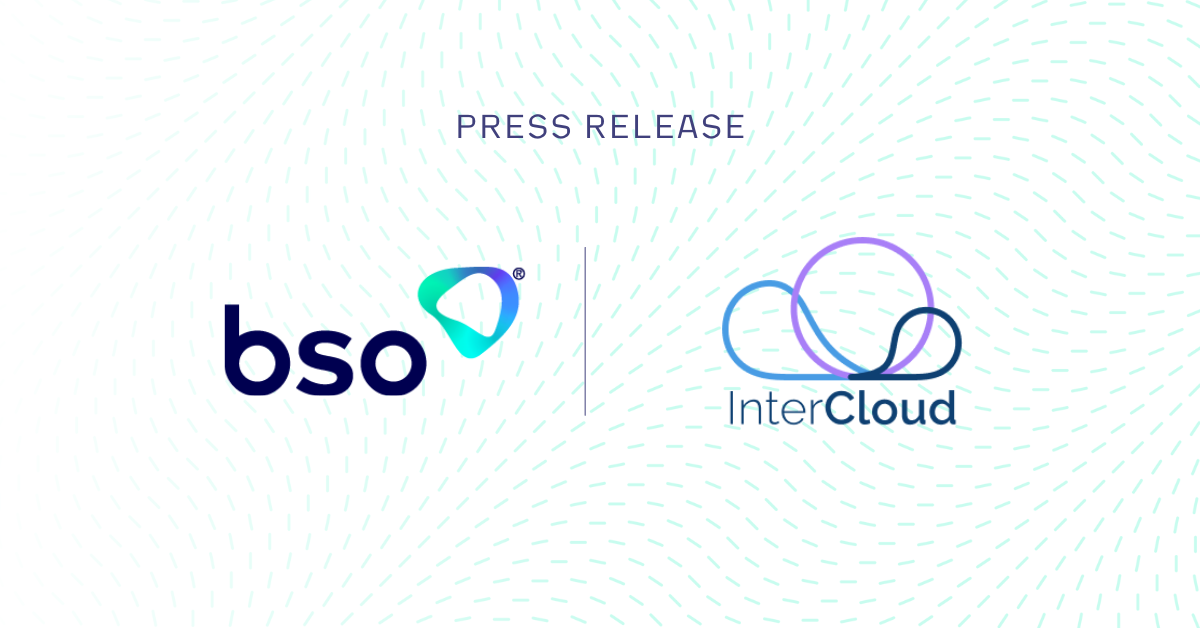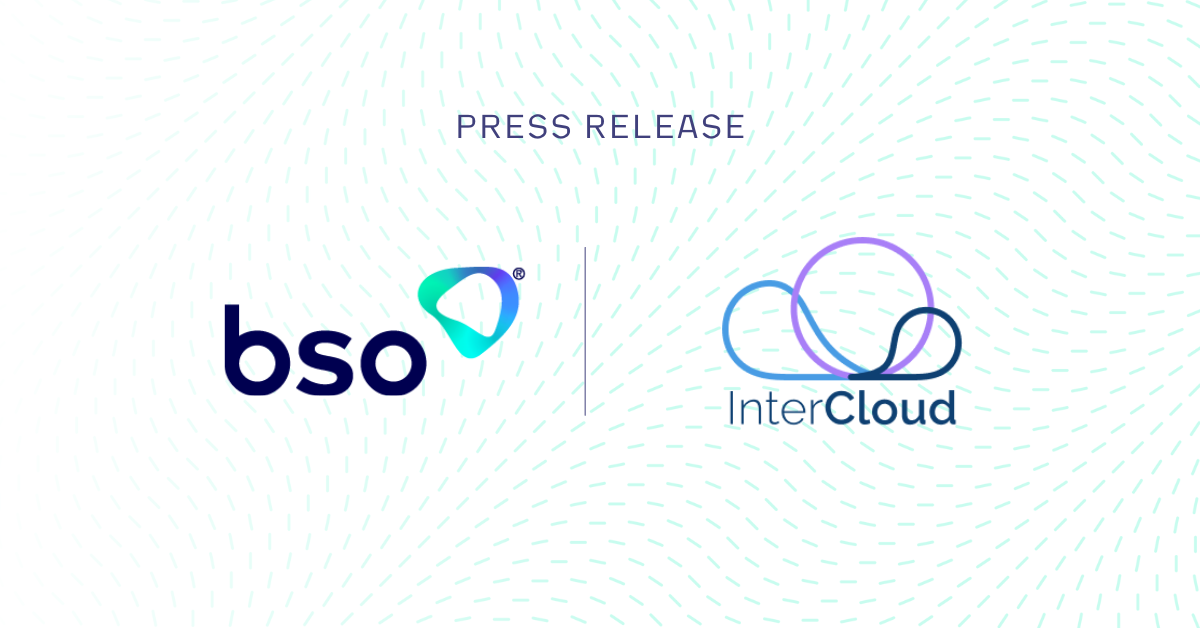
The benefits of cloud computing are well documented. For some, the cloud equals flexible, cost effective and scalable solutions. For others, it’s a path to unburdening IT teams from the constraints of in-house application development and management.
This diversity is both the cloud’s strongest advantage but also one of its main challenges. Even after years of market education, every enterprise defines cloud computing differently. There is no unanimous definition or model. The cloud covers everything from hybrid cloud to the technology that underpins DevOps.
Given that the cloud computing market is growing by nearly 18% annually and covers an extensive list of use cases, cloud service providers have a responsibility to explain what the cloud means.
In this, the opening guide in BSO’s ‘Cloud Computing Glossary’, we outline everything you need to know about the cloud so you can make informed decisions about what cloud computing can do for your company, colleagues and customers.
What is the cloud?
It sounds soft and fluffy, but as is always the case with anything in IT, there is a lot of hardware behind the scenes, and the cloud is no exception.
The infrastructure behind the cloud combines data centres housing servers on which the applications, platforms and data are stored; distributed servers, which can be in geographically dispersed locations; and the endpoints (computers, smartphones, consumer electronics) used to access cloud services.
There are three main cloud service models:
Infrastructure-as-a-Service (IaaS)
This delivers on-demand compute, network and storage to enterprises, usually over the internet, on a pay-as-you-go basis.
Platform-as-a-Service (PaaS)
This gives companies virtualised machines and software to develop, deploy and manage applications.
Software-as-a-Service (SaaS)
The use of software virtually to any device, such as a laptop or PC.
All of these are delivered by private and public cloud service providers, as our guide goes on to explain later.
What this means for businesses is that they can access all their infrastructure and applications virtually and no longer need to pay for the investment in, or maintenance of servers or networks.
The benefit of the cloud for consumers is that it’s seamless – this can be seen with the online backup services provided by Apple and Google, digital services like Gmail and Microsoft Teams and content streaming from providers like Netflix and Spotify.
Why is it called the cloud?
This is a debatable point. In the dark ages of the 70s and early 80s the telecoms industry used drawings and diagrams of clouds to illustrate the phone network and then later the complexities of wide area networking.
Possibly unconnected to this, a Silicon Valley blogger, Dave Winer, referenced a ‘cloud’ of computers in 2001 when he was talking about the internet. However, the term became more commonly used five years later when Eric Schmidt, Google’s Chairman and CEO said that the company’s data services and architecture should be on a ‘cloud’ somewhere.
“We call it cloud computing”, he commented. “If you have the right kind of browser or the right kind of access, it doesn’t matter whether you have a PC or Mac or a mobile phone, or new devices still to be developed, you can get access to the cloud”.
Either way, the term ‘cloud’ is appropriate because the infrastructure is not physically present to the user and the data and services are being accessed remotely.
Variations on the term include cloud computing, the cloud, cloud IT, or just cloud.
Why is the cloud important?
The cloud provides flexibility to support organisations as they grow.
A business can easily scale its IT thanks to the cloud’s on-demand model while the ability to rapidly deploy computing resources means that organisations can access and deploy infrastructure and applications locally and globally in incredibly short timeframes.
An example of this is BSO’s own expansive network which represents more than 240 points of presence in 33 countries. This includes our cloud connectivity to leading cloud service providers (AWS, Azure, Google, IBM, Oracle, and Alibaba) thanks to 50+ active on-ramps.
What this means for companies is that they can have their resources in closer proximity to their end users, positively reducing latency and delivering an enhanced customer experience.
Adoption of the cloud is in direct proportion to the increasing complexity and costs of maintaining legacy IT infrastructure. As IT, networking, and security teams have come under pressure to innovate and deliver strategic projects more quickly and within constrained budgets, the drive towards digital transformation and cloud migration has become indispensable.
With its monthly billing model (OPEX), and its increased flexibility, cloud computing provides companies with uncompromising security and availability. For example, data can be mirrored at multiple redundant sites on BSO’s network.
The cloud’s influence on society
As a society we increasingly rely on digital services to support our healthcare, finance, public administration, scientific and academic needs.
Everything from smart motorways and autonomous cars to automated public transport are becoming features of the smart cities that we live in, and the cloud plays a large role in public safety.
In the world of agriculture, for example, farmers are using the cloud to help predict climate patterns and precipitation levels. In healthcare, the cloud is making us all healthier through AI-powered diagnosis and data analysis.
The use cases of the cloud are truly vast.
What are the different cloud models?
Companies can run infrastructure, applications and software on public, private, hybrid and multi clouds, depending on their specific needs.
A public cloud is owned by an independent, outsourced cloud provider and is available through the internet on a pay-as-you-go model. This model provides easy scalability, support for multiple locations, and reliability.
A private cloud is a dedicated cloud platform, specifically designed for a customer. It will allow a business to have greater control over the environment and it can be externally hosted or managed in-house. It is the option that businesses looking for enterprise cloud connections prefer.
A hybrid cloud is any cloud infrastructure that combines both public and private clouds. It provides the benefits of both models, it can be tailored to support specific requirements but companies need to ensure they allow for any network conflicts that might arise from using two models together and build in effective orchestration mechanisms.
Companies using multi cloud have access to assets, software, applications and infrastructure from more than one cloud service provider, often a mixture of public and private, in one network architecture. This enables a company to choose different cloud providers for different use cases.
Another difference between multi cloud and hybrid cloud is that multi cloud models are not interconnected and businesses select this option because the different environments help them improve security and performance.
At first glance, the types of cloud computing seem simple: public, private, hybrid or multi. In reality, the choices are many. Public cloud can include shared, dedicated and bare metal delivery models. Fully and partially managed clouds are also options. And, in some cases, especially for existing applications where architectures are too complex to move or the cost-benefit ratio is not optimal, cloud may not be the right choice.
The right model depends on the business workload and the sensitivity of the business data. The pros and cons of each cloud deployment model depend on the use case.
What do companies use the cloud for?
The short answer is for flexibility and high-performance. We have already mentioned infrastructure, platforms and software, but the cloud is also a great environment for testing and developing, shortening the timespan for development projects which can be ‘spun’ up or down as needed. DevOps teams commonly use PaaS for application development.
Industries such as retail are also leveraging cloud computing for big data analytics so they can make sense of the massive amount of customer data they gather every day. This allows retailers to assess consumer buying behaviour in real-time so they can more effectively build e-commerce platforms, create targeted content and improve the customer journey.
We have mentioned storage, but in the cloud, even the largest files can be stored and accessed easily and there are none of the worries of maintaining storage infrastructure.
Similarly with disaster recovery and data backup, the cloud stores data across an interwoven network of locations, so it can always be retrieved quickly, and more importantly it automates the process removing concerns about security, availability or capacity.
At BSO, we ensure there is no single point of failure that could close a company’s operations, which is why we are able to deliver 99.99% infrastructure availability and a 100% data lifecycle for object storage.
What is a cloud provider?
A cloud provider is a third-party organisation that offers cloud services and solutions, such as infrastructure, application, software and storage.
They can provide rented, pay-as-you-go services or fully managed services.
BSO is an example of a full-scope cloud provider offering custom private cloud solutions, which we design to support the mission-critical workloads of our clients. What we offer ranges from IaaS, dedicated and shared infrastructure, through to virtual private infrastructure, cloud backup, firewalling, load balancing, object storage and IP transit.
BSO excels at managed cloud, however clients are free to choose how much management they need depending on their requirements.
What’s next for BSO’s Cloud Computing Glossary:
This overview has outlined the cloud’s origins, its extensive adoption across society and business, and the many types of cloud models that exist.
In our next cloud glossary blog, we dive deeper into some of the terms that we explored here.
/5%20trends%20transforming%20networks%20and%20the%20cloud-min.png)
BSO Cloud Connectivity solutions can transform your business
Find out moreABOUT BSO
The company was founded in 2004 and serves the world’s largest financial institutions. BSO is a global pioneering infrastructure and connectivity provider, helping over 600 data-intensive businesses across diverse markets, including financial services, technology, energy, e-commerce, media and others. BSO owns and provides mission-critical infrastructure, including network connectivity, cloud solutions, managed services and hosting, that are specific and dedicated to each customer served.
The company’s network comprises 240+ PoPs across 33 markets, 50+ cloud on-ramps, is integrated with all major public cloud providers and connects to 75+ on-net internet exchanges and 30+ stock exchanges. The team of experts works closely with customers in order to create solutions that meet the detailed and specific needs of their business, providing the latency, resilience and security they need regardless of location.
BSO is headquartered in Ireland, and has 11 offices across the globe, including London, New York, Paris, Dubai, Hong Kong and Singapore. Access our website and find out more information: www.bso.co
SALES ENQUIRY
Get in touch now. Find out how we can transform your business_
You might be interested in_
THE BSO DIFFERENCE
The industries we work across_





/Revolutionising-Connectivity%20BSOs-Tailored-Cloud-Solution-for-CryptoStruct-GmbH.png?width=1050&height=550&name=Revolutionising-Connectivity%20BSOs-Tailored-Cloud-Solution-for-CryptoStruct-GmbH.png)
/6%20Cloud%20Best%20Practices%20for%20Financial%20Technology%20Companies.jpg?width=1200&height=600&name=6%20Cloud%20Best%20Practices%20for%20Financial%20Technology%20Companies.jpg)








